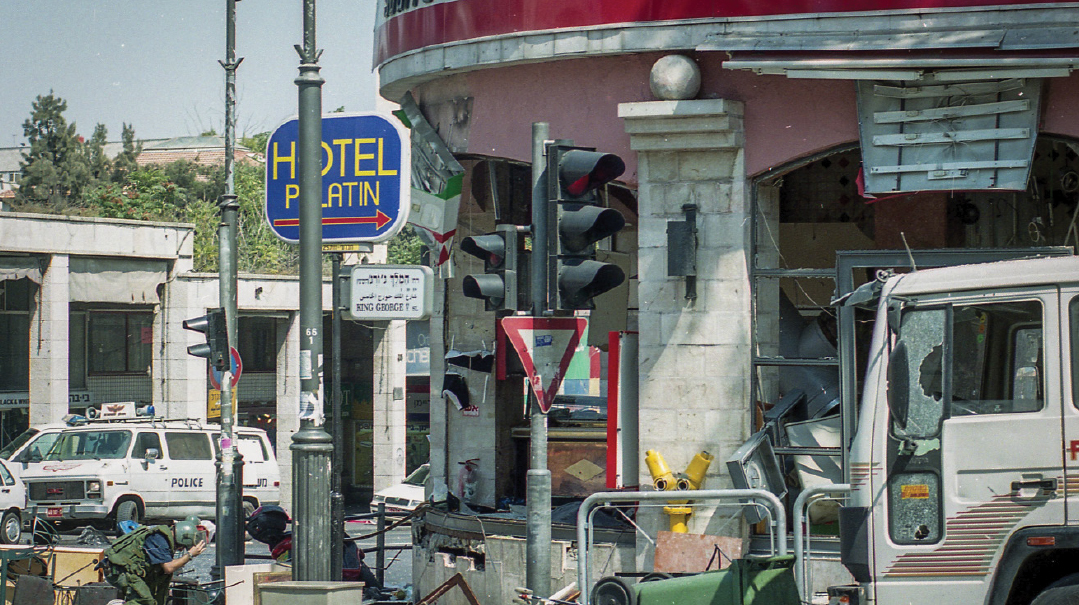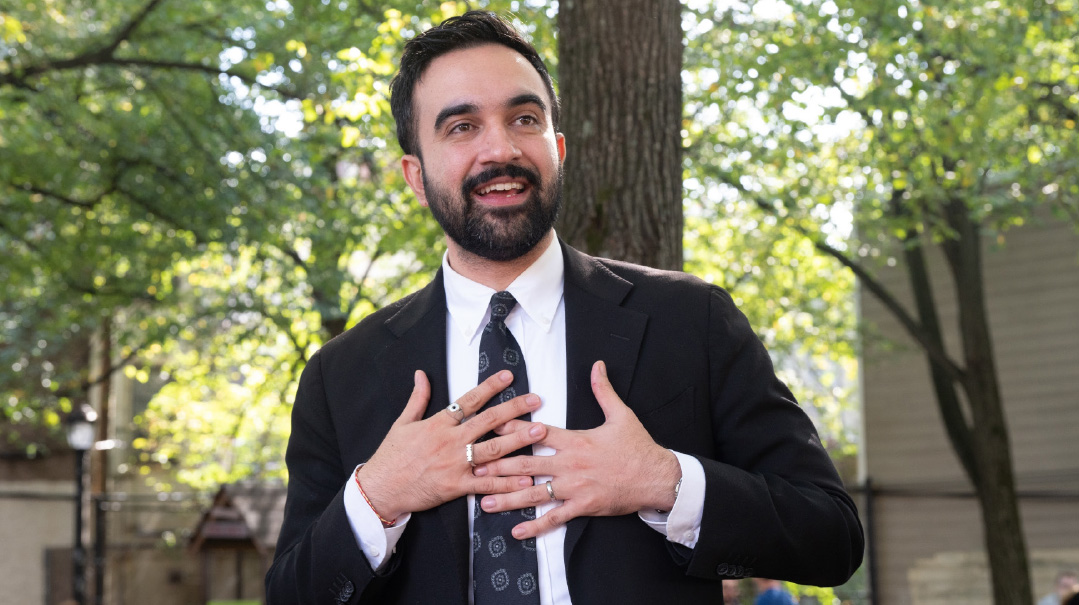Hidden Chambers
| November 12, 2024Avraham looked and did not turn into a pillar of salt. She should not have looked. He did look. And he survived

Photo: Flash90
A friend, I don’t remember who, told me something years ago during the Second Intifada (2000–2005). This was the time of horrendous atrocities against Israeli civilians by Palestinians, such as the bombing of buses, pizzerias, and other heavily trafficked areas.
This friend related that his son had been on a bombed Israeli bus. Others were killed and mutilated, but he was unhurt. Unscathed. A true salvation.
But then my friend added something: “The way the bomb exploded, combined with my son’s location on the bus, meant that he was also spared from seeing any of the victims.”
Perhaps I was thick. I wondered: What could possibly top the miracle of one’s life being saved, and being uninjured to boot?
“What was so important about not seeing the victims?” I asked.
“Zeva’ah,” my friend said. “My son didn’t need to witness any of the zeva’ah, the atrocities.” Twisted bodies, detached limbs, disfigured faces. Ghastly sights. “Those sights can scar you forever. He was rescued from that, too. Complete miracle.”
Lot’s wife looked back. She was scathed. She turned into a pillar of salt.
What is the meaning of this?
Is this image so distant in time and place and culture from our own that it has no meaning for us?
The corrupt cities of Sedom and Amorah were about to be destroyed. At the last minute, even as Lot resisted two angels’ importunings to escape before it was too late, the angels stopped pleading with him and grabbed his hand, grabbed his wife’s hand and the hands of their two single daughters and forcibly rushed them out of Sedom, depositing them outside the cities, beyond the border of destruction.
They were rescued. Safe. Unharmed.
As the angels were whisking away Lot, his wife, and his daughters, one of the angels warned: “Flee for your life! Do not look behind you nor stop anywhere in all the plain lest you be swept away.”
Lot’s wife looked back.
Was she merely curious? Or was she malicious — did Lot’s wife need to see the punishment of the sinners of the cities? Or perhaps the opposite: Did she distrust and disbelieve her rescuers and resent being denied her hearth and home, whose destruction she could not fathom, and whose corruption she found congenial?
The Torah does not address her motivation. It did not matter. She looked back and saw what no human should have to see — “sulphur and fire that rained down upon Sedom and Amorah,” as the Torah put it. Smoke billowing out of crematoria, the stench of burning human flesh, as the Nazis had it. Zeva’ah, as the parent of a survivor of the Second Intifada put it. Bodies burned and other unspeakable atrocities, as rabbis and others saw while identifying Hamas’ post–October 7 victims.
She looked back.
Pillar of salt.
No life. No breath. Not even a tombstone.
Someone else looked.
“Avraham arose early in the morning to the place where he had stood before Hashem. And he gazed down upon Sedom and Amorah and the entire surface of the land of the plain; and saw — and behold! The smoke of the earth rose like the smoke of a kiln.” Where Avraham had stood the day before is where he remonstrated with Hashem to spare the two cities, lest a few righteous people live there — “And will the Judge of the entire earth not do justice?”
Avraham needed to know Hashem’s answer — the fate of the cities. Avraham would know by looking. Would the two cities be destroyed? What would the Judge of the entire earth do? Avraham had to know, and he was answered. “The smoke of the earth rose like the smoke of a kiln.”
Hashem did not accept Avraham’s pleas. Avraham must have been devastated, even as his faith must have been untouched, since, as he stated at the outset of his audacious argumentation with Hashem, “I am but dust and ash.”
Like Lot’s wife, Avraham saw what no human should have to see. He did not disobey a Divine command forbidding him to look back — only Lot’s family was thus commanded. Still, Avraham saw. He did not see the immediate destruction, human bodies burnt or bludgeoned by tumbling bricks and structures. He arrived a day later. He saw the post-destruction scene, the leftover smoke, rising as if from a kiln.
Leftover? Was this any different from smoke billowing out of crematoria, the stench of burning human flesh? I think not. There is no escaping it: Lot’s wife looked back and turned into a pillar of salt. Avraham looked and did not turn into a pillar of salt. She should not have looked. He did look. And he survived.
The difference between Lot’s wife and Avraham, I think, is this. Whatever Lot’s wife’s motivation, none of the possibilities included self-sacrifice for the sake of a humanitarian goal larger than herself. She had no reason to gaze upon the evil. It could only contaminate her own humanity. She had no right to do that. Her body, like everybody’s body, was not her own. It should not be contaminated by images of evil. As the Talmud puts it, it is forbidden to look at the face of an evil person.
Avraham, however, sought a humanitarian goal far larger than himself. His goal was the salvation of two whole cities, Sedom and Amorah. A humanitarian who sets out to save those lives that are at severe risk must place himself at risk.
Tuvia Bielski, who smuggled hundreds of Jews out of the Nazi ghettoes of Novardok and Lida, and Irena Sendler, who smuggled perhaps 2,000 Jewish children out of the Warsaw Ghetto, risked not only their lives but their souls, seeing things again and again that no person should see.* The Judge of the entire earth rejected Avraham’s efforts, but this did not detract from Avraham’s selflessness. Any person who is selfless on that level needs to see what no human should have to see in order to sustain his mission, to refine it accordingly.
Avraham chose to see the zeva’ah. It was the price he paid to develop the monotheistic faith that shaped humanity into believers in the one G-d. Lot’s wife chose to look back and shaped herself into... nothing... but a pillar of salt. But surely somewhere, in some way, Avraham also became a pillar of salt. After all, he saw what he saw, the smoke of the earth rising. Like those who viewed the unviewable terror victims before or after October 7, Avraham was scarred.
Centuries later, Yirmiyah Hanavi identified the locus of Avraham’s price: “My soul will cry in its hidden chambers” (13:17). Or as my late friend and teacher, Fred Englard, a survivor of Auschwitz, put it: “I have no tombstones. I took my cemetery with me, inside me.”
*See The Bielski Brothers: The True Story of Three Men Who Defied the Nazis, Built a Village in the Forest, and Saved 1,200 Jews, by Peter Duffy ( 2003); and Life in a Jar: The Irena Sendler Project — Based on the True Story of Irena Sendler, A Holocaust Hero, and the Kansas Teens Who “Rescued the Rescuer,” by Jack Mayer (2011).
Rabbi Hillel Goldberg is the editor and publisher of the Intermountain Jewish News, for which he has written a weekly column, “View from Denver,” since 1972, and the author of numerous seforim about the mussar movement and other subjects. His column will appear once a month.
(Originally featured in Mishpacha, Issue 1036)
Oops! We could not locate your form.







